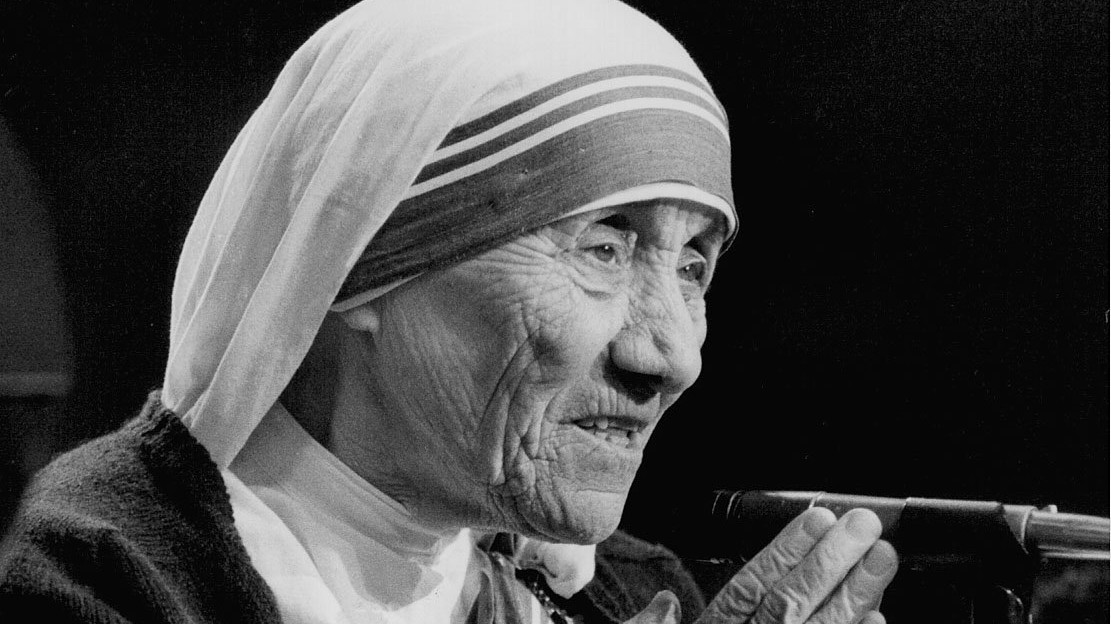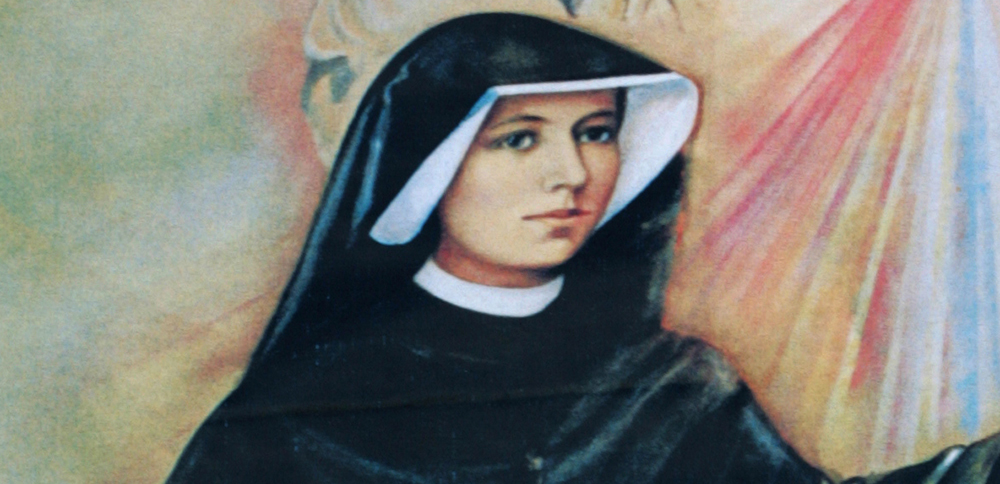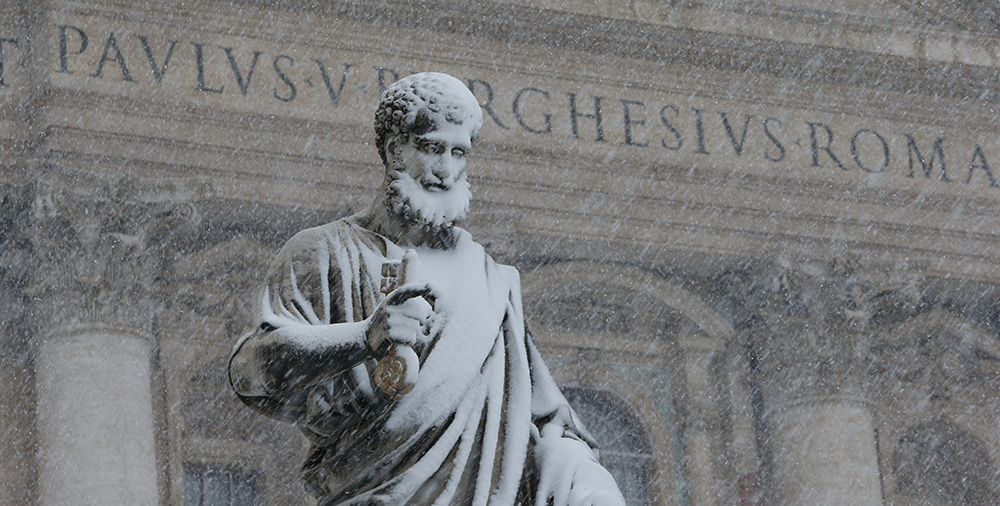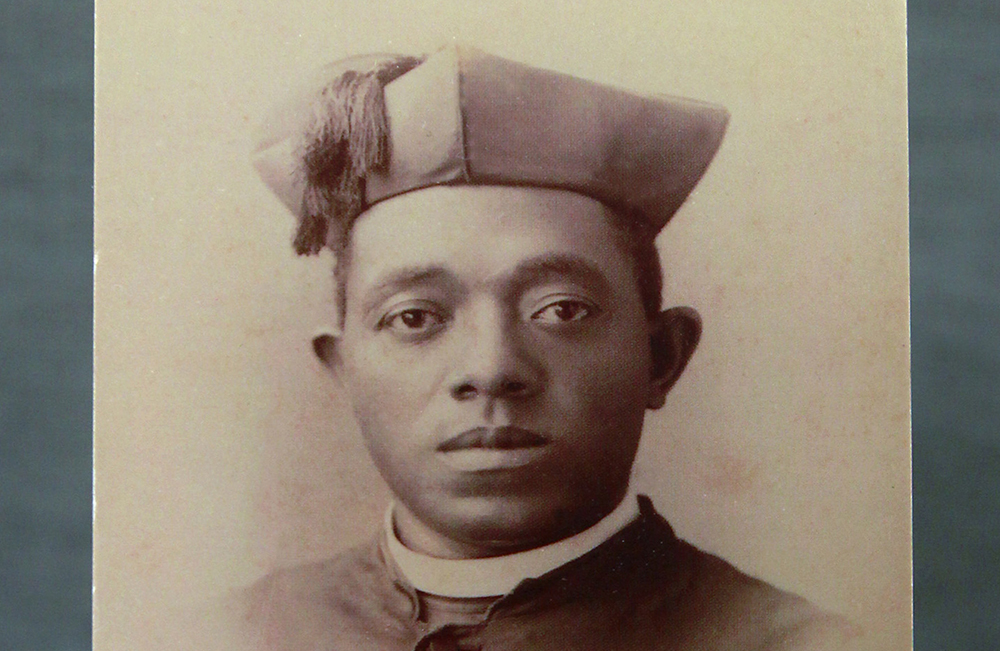1910-97
Feast day: Sept. 5
Known for her heroic works of charity among “the poorest of the poor,” Mother Teresa often remarked that she and her sisters could not carry out their mission without daily, regular Eucharistic adoration. This simple, humble woman known to give her all for those on the margins and in most need recognized that it was Christ who strengthened her, and she needed to begin and end the day in adoration of his Eucharistic presence. It bore great fruit in her life, as she once remarked: “It has brought us so close to each other. We love each other better, but I think we love the poor with greater and deeper faith and love.”
This love prompted Agnes Bojaxhiu to leave home at 18, never to see her family again. She desired to be a missionary, joining the Loreto Sisters in Ireland in 1928. There she learned English, used to teach in the Indian missions where she arrived the following year. Agnes desired a religious name after Thérèse of Lisieux — the patroness of the missions.
“I was to leave the convent and help the poor while living among them. It was an order. To fail would have been to break the faith.”
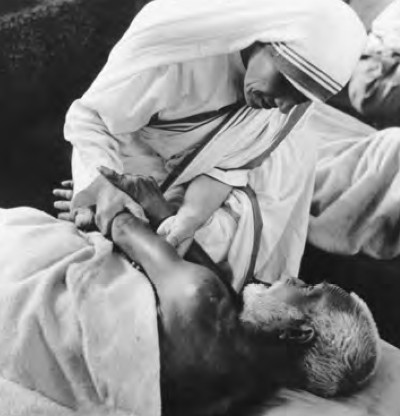
An educator in Calcutta, India, for nearly 20 years, eventually Teresa became headmistress of an affluent girls’ school. But her heart grew discontent with the poverty surrounding the convent. In 1946, she experienced what she described as a “call within a call” — that she was to leave behind her way of life and dedicate herself to the poorest of the poor. “I was to leave the convent and help the poor while living among them. It was an order. To fail would have been to break the faith,” she said. By 1948, she set out from the Loreto convent — adopting a new white sari habit with blue stripes — caring for those in the slums. Within a year, other women asked to join her work. This laid the foundation for a new religious congregation she called the Missionaries of Charity. Their ministry, in Teresa’s words, would consist of caring for “the hungry, the naked, the homeless, the crippled, the blind, the lepers, all those people who feel unwanted, unloved, uncared for throughout society, people that have become a burden to the society and are shunned by everyone.” Through this ministry, she would become known as “Mother Teresa.”
Teresa was never comfortable with attention or notoriety on account of her work. She thought it would detract from Jesus, the one she credited with all her work. But media throughout the world still reported her story.
“By blood, I am Albanian. By citizenship, an Indian. By faith, I am a Catholic nun. As to my calling, I belong to the world. As to my heart, I belong entirely to the Heart of Jesus,” she said.
She traveled the world defending human rights and dignity. A tireless defender of life at all stages, she noted that “any country that accepts abortion is the poorest of the poor.”
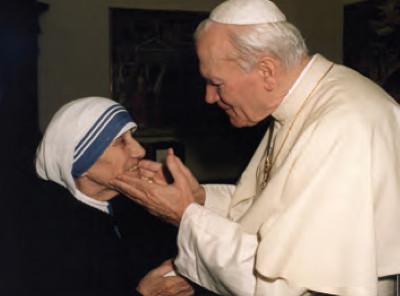
Teresa became a household name the world over, the recipient of numerous honors in recognition of her tireless and devoted service to the poor. In 1979, she won the Nobel Peace Prize, and she received American accolades such as the Presidential Medal of Freedom and one of only eight honorary U.S. citizens.
Mother Teresa died in Calcutta on Sept. 5, 1997. Pope St. John Paul II waived the mandatory five-year waiting period to open her cause of canonization. During that process, it was revealed that Mother Teresa had an extraordinary interior life, in which she experienced great spiritual suffering and desolation. Surviving correspondence with Teresa’s archbishop and others indicate she doubted God’s presence in her life. “The place of God in my soul is blank,” she wrote. “Sometimes — I just hear my own heart cry out, ‘My God,’ and nothing else comes — the torture and pain I can’t explain.” In caring for those who were crucified with Christ, she mystically shared in the agony of Calvary. She was canonized in 2016.
Michael R. Heinlein is editor of OSV’s Simply Catholic. He writes from Indiana. Taken from the “Inspired by the Eucharist” saint booklet.

